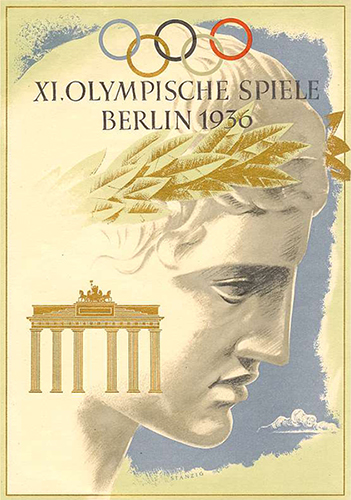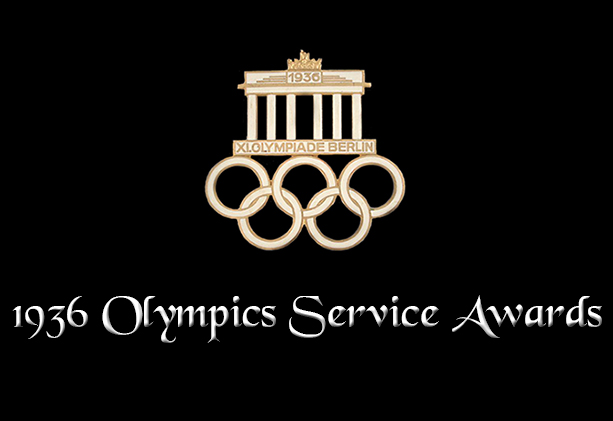

The German Olympic Award (Deutsche Olympia-Ehrenzeichen) was a decoration awarded to administrators of the IV Olympic Winter Games in Garmisch-Partenkirchen and the Games of the XI Olympiad in Berlin 1936.
The award was not intended for actual participants in the Olympic Games, but rather in recognition of those who had orchestrated the "behind the scenes" preparations and work for the events.
Several members of the SS, including, Reinhard Heydrich, Karl Wolff and Heinrich Himmler were awarded the Olympic Games decoration for providing security during the event. Hermann Fegelein was awarded the decoration for overseeing the preparation of the courses and facilities for the equestrian events, and Leni Riefenstahl for her work in filming the various sports events.
Classes
1st Class - Neck Order
2nd Class - for placement on a medal bar
German Olympic Commemorative Service Medal
Awards
The First Class was presented as a neck order.
A total of 767 were presented
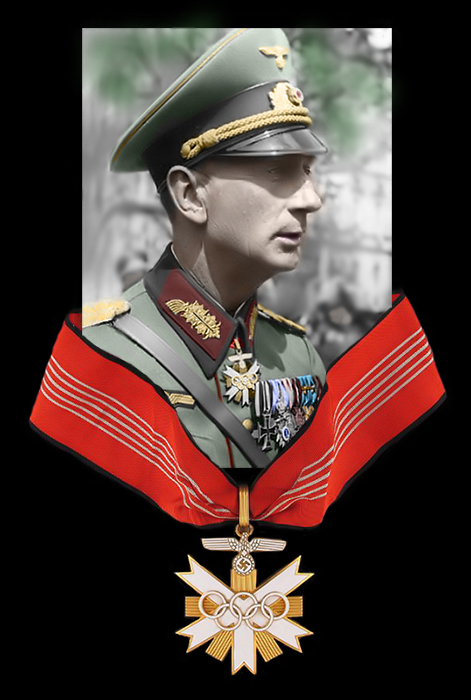
Gebirgsjäger General Eduard Dietl with 1st class Olympic neck order in wear
The 2nd class Olympic award was awarded to persons who played a significant, but lesser role as to the work which went into the presentation of the games.
A total of 3,364 were awarded
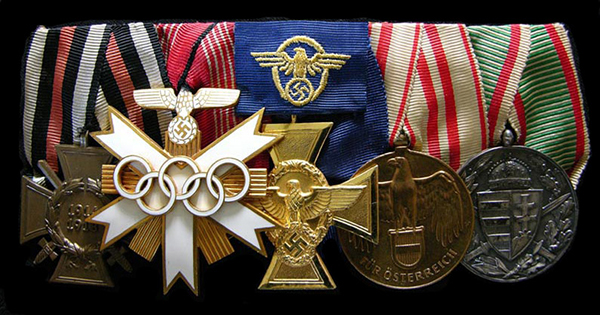
Police medal bar with the Olympic 2nd class award

Japanese Ambassador to Berlin, Hiroshi Ōshima, with 2nd class Olympic award in wear
The German Olympic Commemorative Service Medal (Deutsche Olympia-Erinnerungsmedaille) was established to recognize service in connection with the preparation work and execution of the games.
The medal was not restricted to German nationals
Over 50,000 were awarded
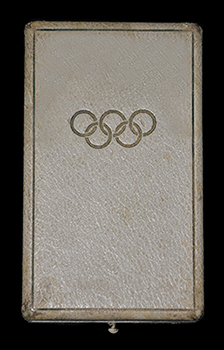

Presentation case for the German Olympic Commemorative Service Medal
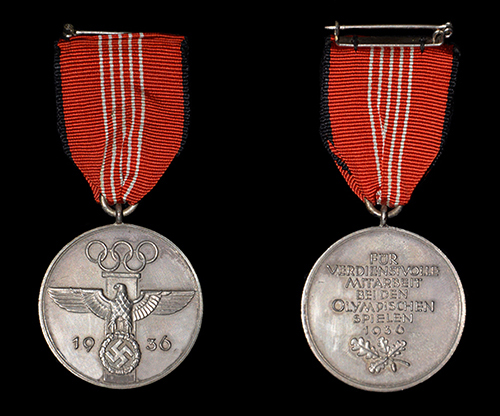
1936 German Olympic Commemorative Service Medal

Medalbar with the Olympic Commemorative Service medal

Olympic Commemorative Service medal in wear
All classes could be worn, as per regulations, on a ribbon bar. Both the Olympic 2nd class award and the Commemorative Service medal were mounted on plain ribbons

Police ribbon bar with the Olympic Commemorative Service medal
The 1st class Olympic neck order, when worn on a ribbon bar, had an attachment in the form of an eagle to distinguish it from the 2nd class award and Commemorative Service medal

Holder of the the 1st class Olympic neck order, SS-Obergruppenführer Reinhard Heydrich with ribbon bar in wear
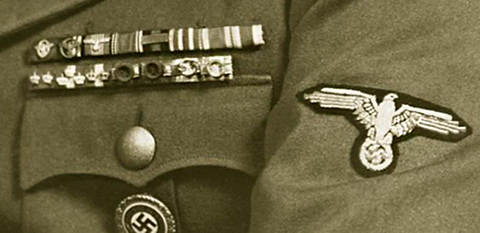
A close-up shows the eagle attachment of the 1st class award when worn on the ribbon bar (top row, third from the left)
Official Visitor Badges
The five Olympic rings was utilized as a publicity badge for the Games as early as 1935 with a total sale of 400,000

publicity badge for the 1936 Olympic Games
The Organizing Committee decided to produce a special visitor's badge to be sold after the opening of the Festival. As with the earlier Olympic rings badge, Professor Raemisch was also entrusted with the design of the new badge.
In tombak and ivory enamel, a total of 675,000 were produced
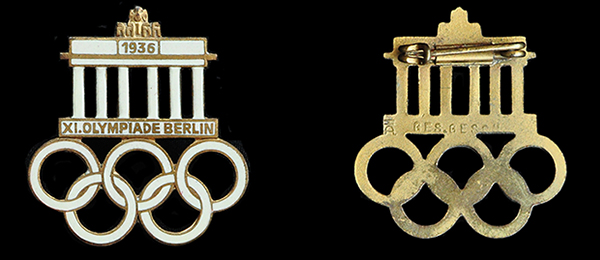
The official badge for the 1936 Summer Olympic Games held in Berlin

The official badge for the 1936 winter Olympic Games held in Garmisch-Partenkirchen, Bavaria
